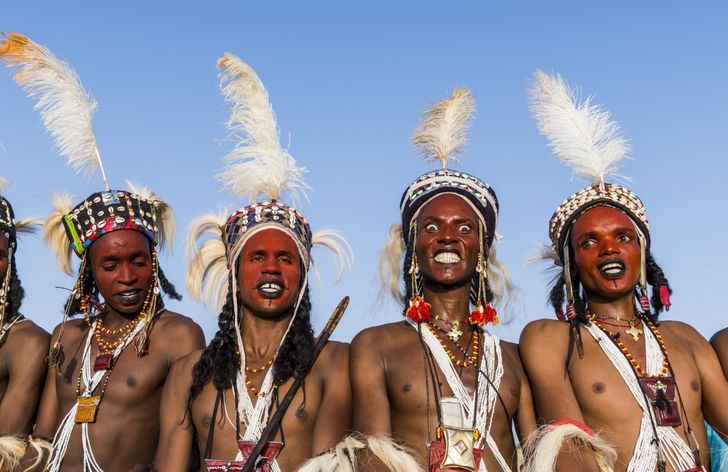It doesn’t have a definitive answer as beauty is subjective. However, some tribes are celebrated for their unique charm. The Himba tribe in Africa, with their radiant complexion and nomadic lifestyle, is often considered exceptionally beautiful. The Maori people of New Zealand are renowned for their distinctive tattoos and rich cultural heritage.
The Ladakhi tribe in India, with its peaceful demeanor and stunning landscapes, also captures hearts. Ultimately, beauty is diverse, and every tribe holds its unique allure, contributing to the rich tapestry of human cultures.
Wodaabe Tribe: The Architects of Beauty Pageants
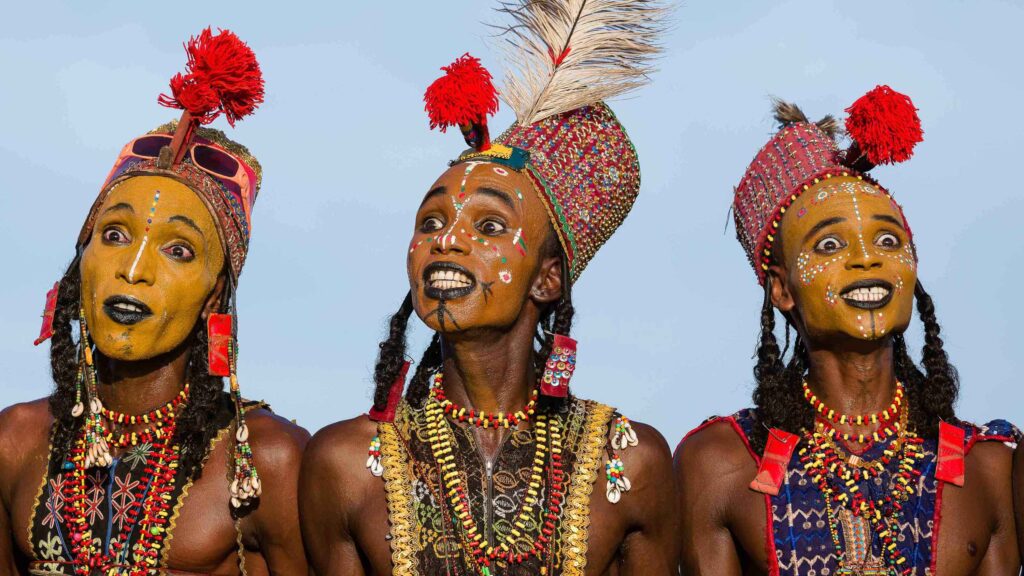
Undoubtedly, the Wodaabe tribe emerges as one of the most gorgeous and beautiful tribes in Africa. Nomadic wanderers across the Sahel region, from northern Cameroon to Chad,
Niger, and northeast Nigeria, the Wodaabe consider themselves among the most stunning individuals globally. Renowned as the architects of beauty pageants, their cultural practices highlight physical beauty alongside skills, talents, and cultural knowledge.
The Wodaabe’s beauty pageants, known as Gerewol, are an annual celebration of male beauty and charm. During Gerewol, men adorn themselves with elaborate makeup, costumes, and jewelry.
The competition culminates in a dance where men showcase their attractiveness to a panel of female judges. It is a spectacle that not only emphasizes physical allure but also celebrates the broader concept of beauty within their cultural context.
Chukchi Tribe: Siberian Elegance in the Arctic

The Chukchi, Siberian indigenous people, inhabit the Chukchi Peninsula, the Chukchi Sea, and the Bering Sea area.
Descendants of those around the Okhotsk Sea, the Chukchi showcase a unique blend of Asian heritage, sharing close relations with the indigenous groups of America and the Ainu people.
The Chukchi’s aesthetic charm is deeply intertwined with their harsh Arctic environment. Their traditional clothing, made from animal skins, is not only functional in extreme cold but also showcases intricate craftsmanship. The use of vibrant colors and detailed patterns adds an artistic touch to their attire, reflecting both cultural identity and adaptation to their surroundings.
Ladakhi: Tranquil Beauty Amidst India’s Far North

In the Ladakh region of India’s far north, the Ladakhi people captivate with their peaceful and joyful demeanor. A blend of Buddhist and Muslim traditions, Ladakh’s awe-inspiring landscapes, clear skies, and vibrant cultural activities contribute to the tribe’s overall charm.
Ladakh’s cultural richness is expressed through traditional festivals such as Hemis, where Ladakhis celebrate with masked dances, vibrant costumes, and spiritual rituals.
The Ladakhi attire, adorned with intricate embroidery and jewelry, reflects their connection to the land and their unique cultural heritage.
Himba Tribe: Radiant Elegance in Namibia’s Desert
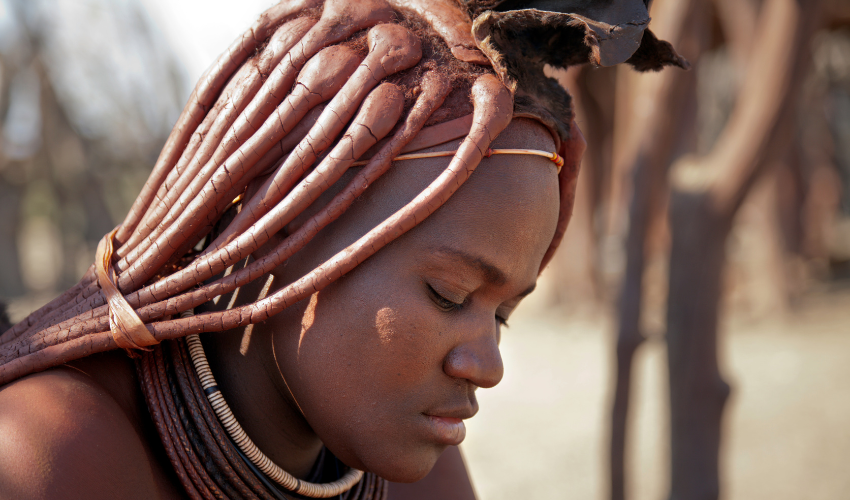
Often considered Africa’s most beautiful tribe, the Himba people inhabit the arid Namib desert. Their otjize-coated hair and skin create a radiant complexion, while their unique semi-nomadic lifestyle adds an otherworldly elegance to their presence.
Rituals involving smoke and blankets highlight their resourcefulness in water-scarce environments.
The Himba people’s beauty rituals go beyond aesthetics; they are deeply rooted in their environment. The use of otjize, a mixture of butterfat and ochre pigment, not only beautifies but also protects the skin from the harsh desert sun.
Their traditional hairstyles and jewelry hold cultural significance, and each element of adornment tells a story of identity and belonging.
Maori: Polynesian Elegance in New Zealand

New Zealand’s indigenous Polynesian people, the Maori, boast a unique cultural heritage shaped over centuries. Known for their distinctive full-body and face tattooing, the Maori people’s cultural identity is characterized by a rich dialect, mysticism, and unique artistic performances.
The Maori’s intricate tattooing, known as Ta moko, is a form of storytelling. Each tattoo carries ancestral and personal significance, representing one’s genealogy, achievements, and social status. The preservation of the Maori language, traditional arts, and carving skills further enhances their cultural vibrancy and contributes to their overall allure.
Dayak Tribe: Borneo’s Austronesian Tapestry
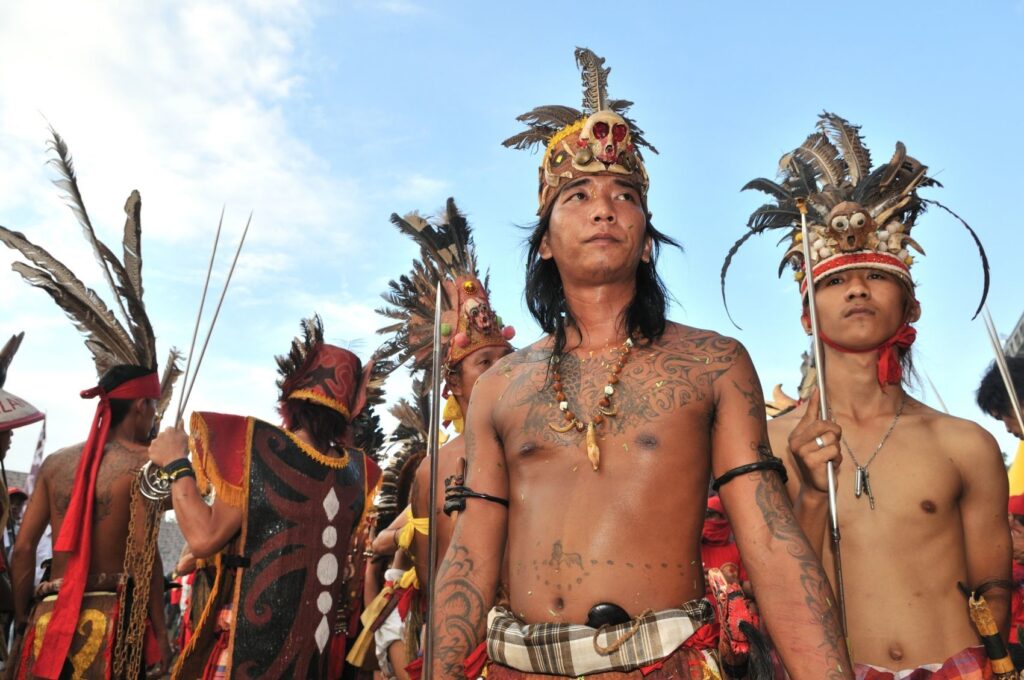
Representing over 200 ethnic communities in Borneo’s central and southern interior, the Dayak tribe stands out with their Austronesian languages and gorgeous traditional clothing.
Colorful beads on black cloth create a striking visual contrast, symbolizing the tribe’s rich heritage.
The Dayak people’s clothing is a testament to their craftsmanship and cultural diversity. Intricate beadwork, often depicting symbols of nature and spirituality, adorns their traditional attire.
Tattoos, another essential element of Dayak culture, serve as markers of identity and status, showcasing the individual’s journey within the community.
Uighur: Formal Minority Beauty in China
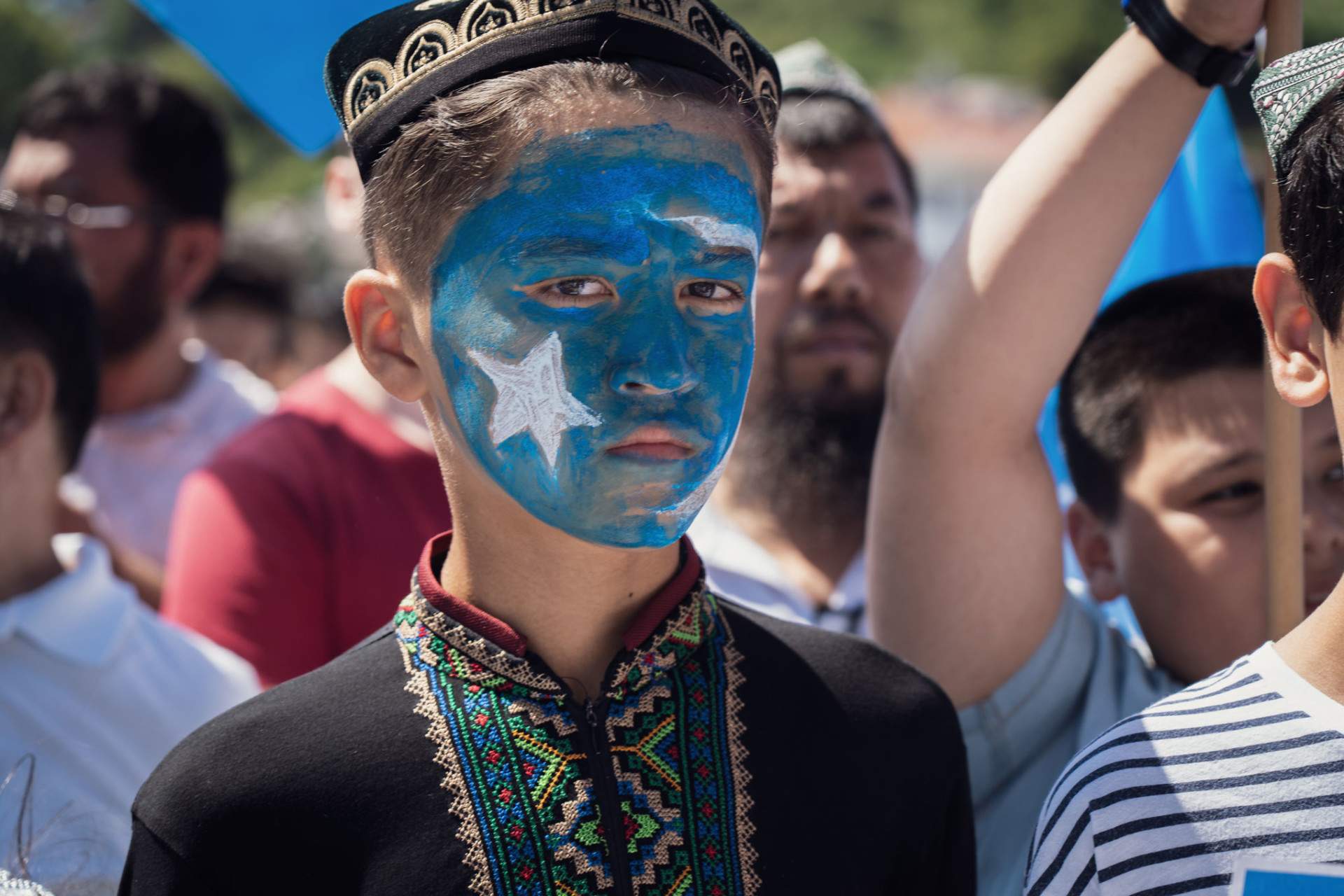
The Uighur people, a formal minority group in China, showcase distinctive beauty with large eyes, an elevated nose, and natural talents in singing and dancing.
Spread throughout Central Asia, the Uighur tribe’s unique features and cultural practices make them stand out among the most beautiful tribes globally.
The Uighur people’s physical features, such as their large eyes and three-dimensional faces, are celebrated as unique markers of beauty.
Their traditional attire, often adorned with vibrant colors and intricate patterns, reflects a harmonious blend of Central Asian aesthetics and Muslim cultural influences.
Uighur women, in particular, are known for their natural grace, both in their physical appearance and artistic expressions.
FAQ
What are the 3 largest tribes?
Identifying the three largest tribes depends on specific criteria, such as population size or geographical dispersion. Generally, tribes like the Cherokee, Navajo, and Sioux are among the most populous Native American tribes.
What are the 5 biggest tribes?
The five biggest tribes include the Cherokee, Navajo, Sioux, Chippewa, and Apache, with varying population sizes and geographical distributions.
What are the richest Indian tribes?
Determining the richest Indian tribes involves considering factors like economic ventures, natural resources, and treaties. Tribes such as the Shakopee Mdewakanton Sioux Community and the Cherokee Nation have notable economic success.
What is the wildest tribe in the world?
Referring to a tribe as the “wildest” can perpetuate stereotypes. Indigenous tribes worldwide have diverse cultures, and it’s essential to avoid generalizations.
What is the most mysterious tribe in Africa?
The concept of the “most mysterious” tribe is subjective. Various African tribes have unique traditions and practices, and labeling one as the most mysterious oversimplifies their rich cultural diversity.
Which country has 40 tribes?
Nigeria is often cited as having approximately 250 ethnic groups, which can be loosely equated with tribes. The number 40 may refer to a specific context or region within Nigeria.
What are the 5 nations tribes?
The Five Nations, also known as the Iroquois Confederacy, include the Mohawk, Oneida, Onondaga, Cayuga, and Seneca nations. Later, the Tuscarora joined, forming the Six Nations.
Who won the French and Indian War?
The British won the French and Indian War, resulting in the Treaty of Paris in 1763, which reshaped colonial territories in North America.
Is Six Nations a tribe?
The Six Nations refers to the Iroquois Confederacy, which includes the Mohawk, Oneida, Onondaga, Cayuga, Seneca, and Tuscarora nations. While not a single tribe, it represents a confederation of distinct indigenous nations.
Conclusion
As we discover the most beautiful tribes globally, it’s clear that beauty is more than just looks. Each tribe carries a special cultural story, mixing old traditions with modern influences. What makes these tribes captivating isn’t just how they look but also how they keep their traditions alive, adding to the rich tapestry of human history worldwide.
From the Wodaabe’s beauty contests to the Himba’s grace in the desert, these tribes show us a diverse and fascinating view of human culture and beauty. Their beauty goes beyond the surface; it reflects centuries of traditions, strength, and a strong bond with the natural and cultural world they call home.

